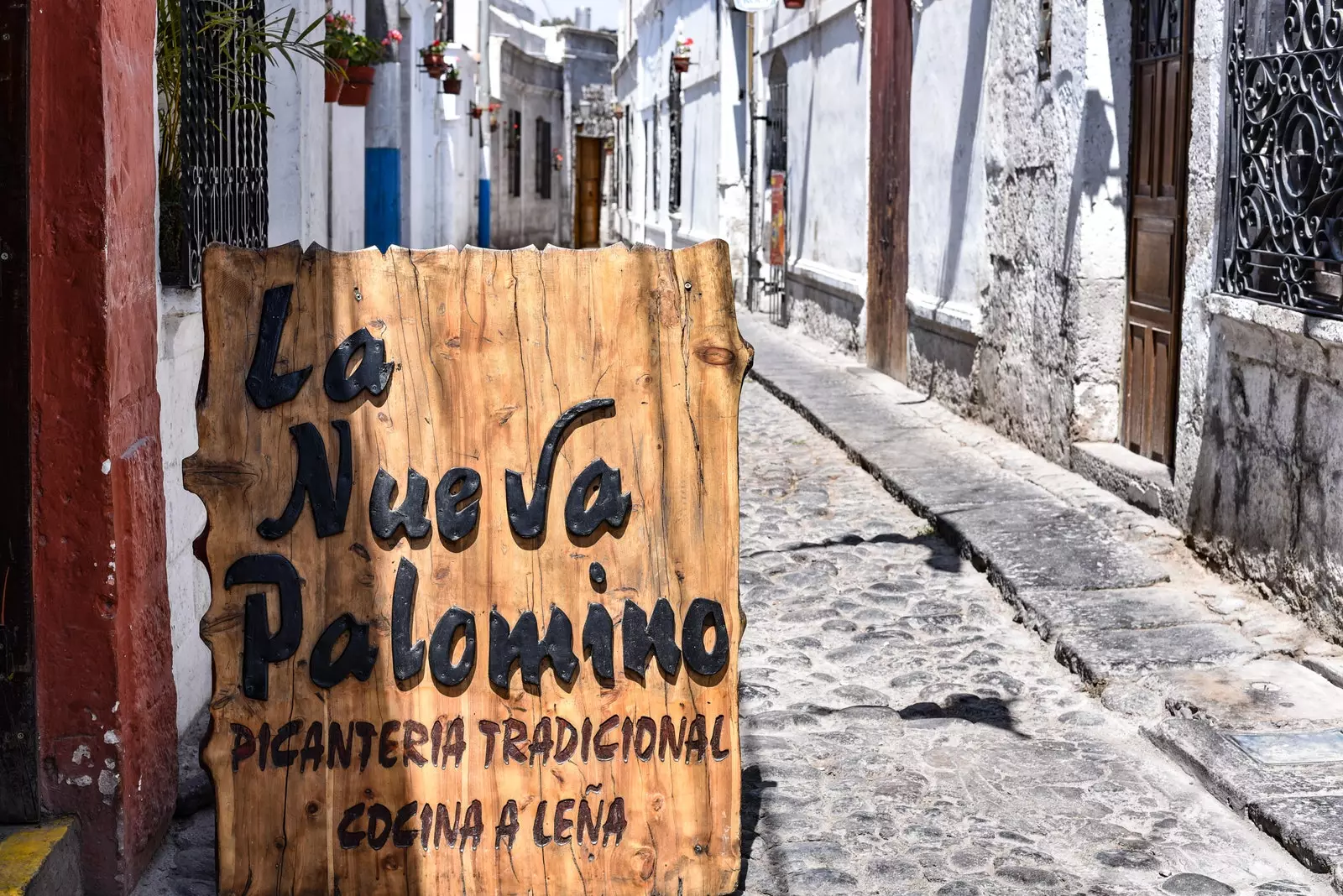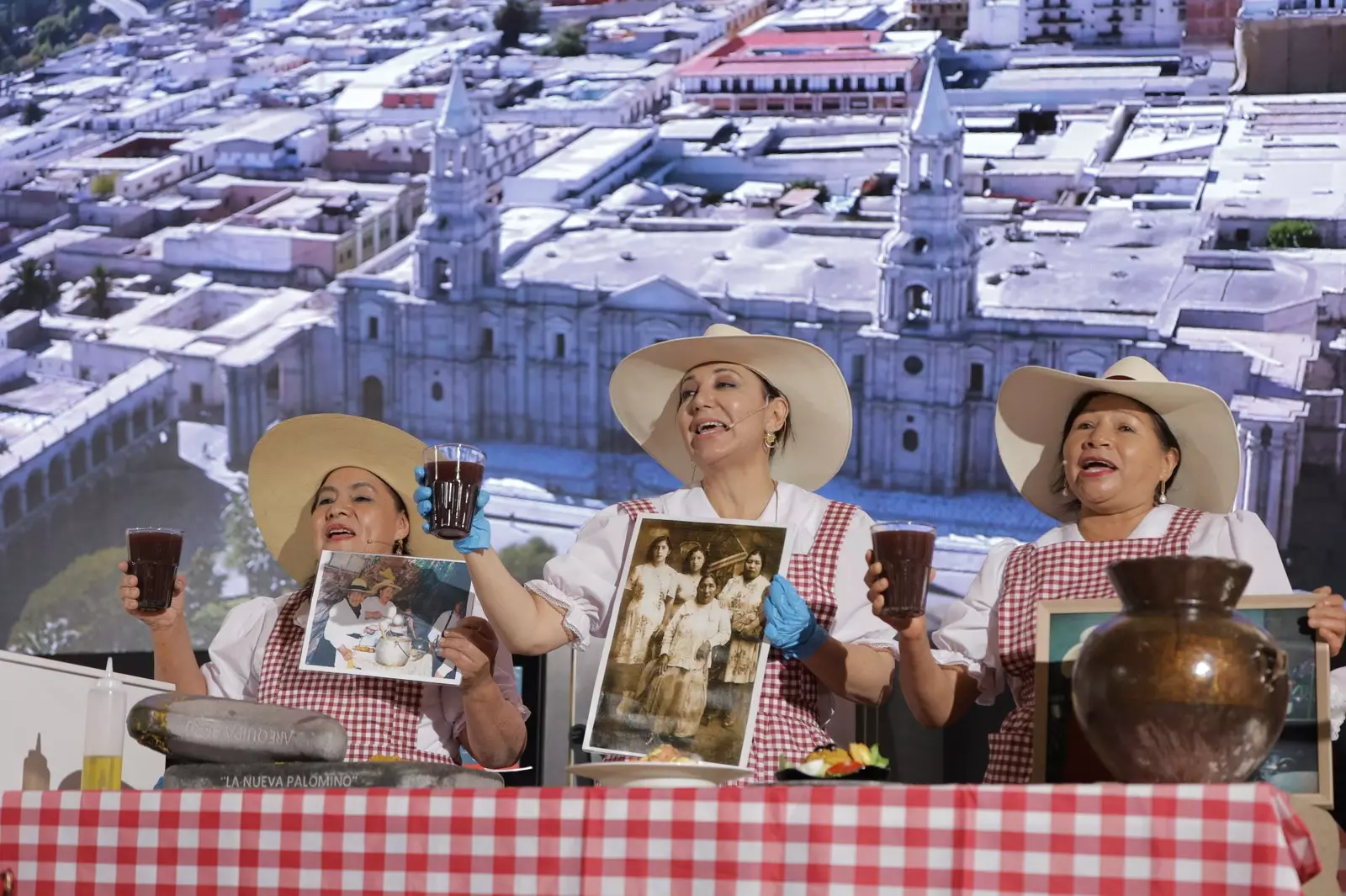Her mothers, grandmothers, great-grandmothers and great-great-grandmothers were spicy but were never recognized. We chatted with Mónica Huerta from The New Palomino , one of the spicy places that survive in Arequipa (Peru), about a secular trade in the form of a legacy that runs the risk of being lost in time.
“The piquanta trade was not an option, but an obligation ”, Monica Huerta tells us. She inherited it from her mother, Irma Alpaca Palomino, who in turn inherited it from her grandmother, Juana Palomino. That's why her "picantería" is called La Nueva Palomino.
But, what is a spicy? It was in the 16th century when the germ emerged: the knickknacks , where it was sold the girl with guiñapo , which was the drink that their ancestors drank, made with black corn with a short fermentation (which means that children can also drink it) and has many properties. “ The chicherías became "picanterías" by including some very spicy dishes to encourage the consumption of chicha ”, Monica tells us.
Its cuisine is mestizo, traditional, wood-fired and passed through the fulling mill: a flat stone that, thanks to the oscillating movement of another with a curved base, grinds.
“DAUGHTER, YOU WILL END UP LOVING HIM”
Picanteras are a living culture . “It has been declared Cultural Heritage of the Nation and we want it to be declared Intangible Heritage of Humanity because it is important to perpetuate this ancestral knowledge. Who is going to preserve this legacy?” asks Mónica Huerta. To them, she recognizes her, they imposed it and reluctantly they accepted it. "But we ended up loving him as much or more than our mothers."
Monica confesses that she didn't like the picadora “not one bit”: she was jealous of her because she believed that her mother loved the picador more than her. That grudge and resentment turned into passion , when in 2014, her mother became seriously ill. "There were two months in which we did not separate: we did not stop talking about all those things that we had never talked about and he told me the story of my grandmother, who was a wandering Jew because she did not have her own premises for the picadora".
Before Irma passed away, she made her promise before a notary that she was not going to close the "picantería" and that she was going to support it for at least six years. Then, Mónica found wills from 1895 where her great aunt left the spicy food to her grandmother and from 1930, where her grandmother did the same with her mother. They all inherited the promise to keep the business going for those six years. . "The wisdom of our mothers is worth more than a thousand words: it was the lived experience." And Monica ended up loving him.

La Nueva Palomino, a traditionalpicantería in Arequipa.
Mónica tells us that the picadors put on their best clothes to cook, as well as the jewelery of their mothers or grandmothers. But at the time of their ancestors they suffered a lot of repudiation from society because they were never forgiven for being such independent women who decided for their own lives and had their own business.
"In the picador, people drank and danced, but only to those who were allowed by the picador, not just anyone." The spicy was always the visible head and she was (and is) a very empowered woman. “Since she was alone -90% of the picarradas are single women or widows- she has always had a strong character but at the same time loving, compassionate, tender and supportive”, admits Monica excitedly.

The spicy ones in the II Congress of Gastronomy, Women and Female Rural Environment, held in Cangas del Narcea (Asturias).
WHAT TO EAT IN THE PICANTERIAS
The recipe book of the picadors is very extensive: you can find over 800 recipes , although some are very similar or the same. Others, on the other hand, differ from one picador to another because they are family recipes, typical of the mother or grandmother of the picador.
"Here, eating is a ritual : start with ones Jayaris (from Quechua Cayari: "that itches"). They are hot or cold spicy dishes served with chicha at mid-morning and that were formerly eaten two hours after lunch. “Its ingredients range from limpets to squash, passing through senca (snout, nose and snout of cattle, especially cattle), broad beans, corn, cheese or charqui that show the diversity of our Arequipa cuisine”.
There are also suckers. “Arequipa is considered the city of our everyday chupe: they are thick green broths with very good ingredients -meat and vegetables-, and every day a different one is made”. Stews are also served in the picadors, which sometimes have chicha as the main ingredient.
INTERNATIONAL AWARD “GUARDIANS OF TRADITION”
Now, the picadors are more united than ever because they have created a brotherhood: 10 years ago the Society of Picanteras of Arequipa , to which more than 40 picadors already belong.
"We had the opportunity to get to know each other, which our mothers never did." They are the ones who have received the International Award "Guardians of Tradition" that has been delivered in II Congress of Gastronomy, Women and Rural Environment Féminas , held in Cangas del Narcea (Asturias). Representing all of them, Mónica Huerta from La Nueva Palomino, Beatriz Villanueva from Laura Cau Cau and Maruja Ramos de Aguilar of The Maruja.
Their batán, the one they brought to Spain to prepare their recipes at the congress, has stayed in Asturias: they have decided to give it to them at Asturian guisanderas Now they have another story to tell. The one of that day in which the Arequipa spicy women and them, heiresses of the gastronomic tradition of Asturias, met and exchanged knowledge, flavors and regrets.
